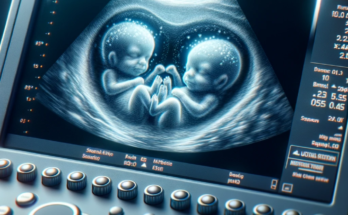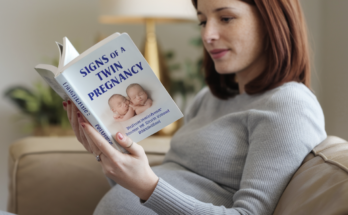Twin-to-twin transfusion syndrome (TTTS) is a common yet serious concern for identical twin pregnancies as it endangers the well being of both babies. The condition occurs between identical twin fetuses that are monochorionic (MC), or twins who share a single placenta. TTTS is an unbalanced blood flow between MC fetuses. Because MC twins share the same placenta, they also share blood vessels that distribute blood to each baby. For reasons that are unknown, 9% of MC twin fetuses will develop an uneven flow of blood between the shared blood vessels, resulting in TTTS.
Approximately one in 360 pregnancies and two-thirds of all identical twin conceptions will result in MC twins and be at risk for TTTS. The good news for families facing TTTS is that with early diagnosis and intervention, treatment can successfully reverse the effects of the condition, but parents must know what questions to ask and when to seek tests and treatment.
What, if anything, can expecting mothers of monochorionic twins do to help prevent TTTS?
The reason TTTS develops is unknown, however doctors do know that it is not inherited, genetic, or caused by anything that a mother or father has or has not done, therefore there are no preventative measures to take to prevent the disease. However, there are proactive steps parents can take to minimizing the effects of TTTS, namely educating themselves about the medical questions to ask and tests to request.
The key question for parents to ask their MDs is if the twin fetuses share a single placenta. If they share one placenta, it is important to schedule an ultrasound evaluation with a maternal-fetal medicine specialist, and follow up with repeat ultrasounds every two weeks starting at around 16 weeks of gestation (4 months) Into the pregnancy and continuing until delivery.
Once TTTS has been diagnosed, it is imperative to seek consultation and treatment with a specialist within a few days of the diagnosis. Because fetuses develop rapidly and TTTS has such a dramatic impact on unborn babies, once it begins the effects spread rapidly. Postponing treatment by even a few days can considerably alter the potential for successful intervention.
Expectant parents should never feel timid about proactively asking their doctors about TTTS and insisting on regular testing, as early detection and treatment is the best way to protect their little ones from the effects of the condition.
What, if anything, can an expecting mother who has been diagnosed with TTTS do to help alleviate its effects?
Seeking immediate treatment is the best way to ensure the healthiest possible outcome for the babies. If your doctor detects TTTS, do not lose hope. Do seek treatment from an expert immediately. There are several surgical options that can reverse the effects of TTTS. Your doctor will determine the best treatment option according to the gestational age of the pregnancy and the stage of TTTS. The most commonly used procedure is placental laser ablation – a technique that is very successful in reversing the effects of TTTS with minimal disruption to the placenta.
What is placental laser surgery and what role does it play in fighting against TTTS?
Placental laser ablation is a type of fetal intervention that targets the blood vessels shared between the twins. Fetal Interventionists will use the laser to separate the specific blood vessels and correct the flow of blood and nutrients so that it is better balanced. The treatment is minimally invasive and can increase the rate of survival of both babies to about 60% and survival of at least one baby to 80%. The earlier the treatment is sought in the development of TTTS, the greater the potential for helping both babies with the procedure.
If a woman has had a TTTS pregnancy in the past, is she more likely to have another one in the future?
No, the chance of having TTTS does not increase if the mother had a previous TTTS pregnancy. There are no known causes of TTTS, and it can happen to anyone expecting identical twins that share one placenta. Again, it is not genetic or inherited, and is not caused by anything that the mother or father has or has not done.
Is there any benefit to delivering via cesarean section when dealing with a TTTS pregnancy?
Delivering via C-section depends on the position of the babies in the womb. However, babies with TTTS are almost always delivered via c-section, as it is the safest option.
What developments have been achieved in recent years to help prevent, diagnose and treat TTTS?
The treatment options that are described above would not even be imaginable only twenty years ago. Thanks to medical and technological advances, doctors are able to intervene to help you have the healthiest pregnancy possible.
About the author
Karen Moise has been a registered nurse for nearly 30 years and is responsible for informing physicians and patients about the etiology, pathology and the evaluation process of fetuses with congenital anomalies through her position as a nurse coordinator at the Texas Children’s Fetal Center at Texas Children’s Hospital in Houston, Texas. As a nurse and mother of three, she is passionate about supporting families and ensuring each patient receives the best possible care. In addition, her husband, Dr. Ken Moise, is a leading maternal-fetal medicine specialist and fetal interventionist at Texas Children’s Fetal Center, so their careers are truly a family affair. Learn more about Texas Children’s Fetal Center at www.fetal.texaschildrens.org.
Written by: Karen Moise, R.N.




